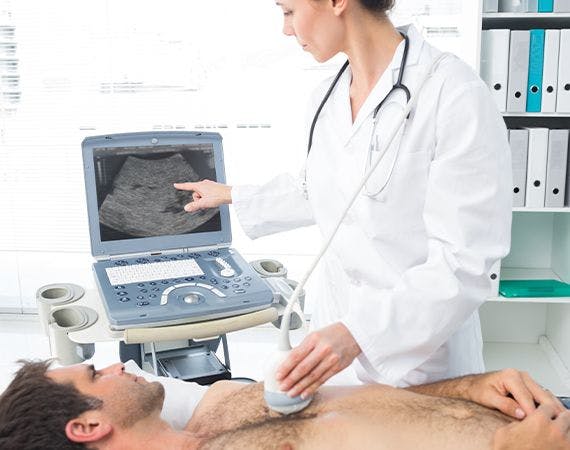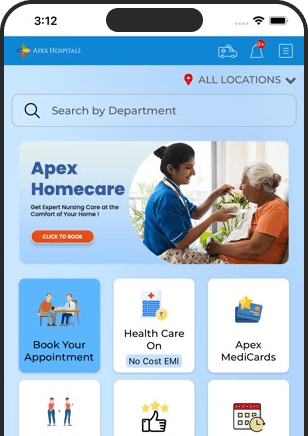Trans Oesophageal Echocardiography (TEE)
Trans Oesophageal Echocardiography (TEE) | Apex Hospitals Jaipur

What is a transoesophageal echocardiogram (TEE)?
A transoesophageal echocardiogram (TEE) is a diagnostic test that utilizes sound waves to generate detailed images of the heart. What sets TEE apart from other echocardiograms is its internal imaging approach, capturing pictures from within the body.
During the procedure, a slender tube known as an endoscope is inserted down the throat and into the oesophagus (food tube). Attached to the endoscope is a small transducer, a device emitting sound waves. As these waves encounter various regions of the heart, they create echoes, which are then transmitted to a computer. The computer processes these echoes into detailed images, offering a comprehensive view of the heart's structure and function.
Why is it done?
To evaluate the functionality of the heart's chambers, valves, and blood vessels to ensure optimal blood flow through the heart
To detect and assess blood clots in the heart, assisting in the treatment strategy for atrial fibrillation, an abnormal heartbeat condition
To identify structural abnormalities in heart valves and chamber walls
To assist in guiding the placement of catheters during various diagnostic and treatment procedures
Procedure Details
During
A transoesophageal echocardiogram (TEE) may be performed on an outpatient basis or during a hospital stay, and the procedure details can vary based on your condition and your doctor's preferences. Here is a general outline of the TEE process:
1. You'll be asked to remove any jewellery or objects that might interfere with the procedure. Dentures or oral prosthetics will also be taken out before inserting the TEE probe.
2. If necessary, you'll be given a gown to wear, and you may be asked to remove some clothing.
3. Empty your bladder before the procedure.
4. If needed, an intravenous (IV) line will be started in your hand or arm for medication and IV fluids.
5. You'll lie on a table or bed, usually on your left side, with a pillow or wedge for back support.
6. Electrocardiogram (ECG) electrodes will be attached to monitor your heart's electrical activity and vital signs during the procedure.
7. A local anaesthetic spray will be applied to the back of your throat to numb it, enhancing comfort during the passage of the TEE probe.
8. A bite protector will be placed in your mouth.
9. You'll receive a sedative to help you relax.
10. Oxygen may be administered through nasal tubes if necessary.
11. The room lights may be dimmed to improve the visibility of the echocardiogram monitor.
12. The TEE probe will be gently passed through your mouth and throat, and you might be asked to swallow to assist in the probe's passage.
13. Once the probe is in the correct position, images will be captured.
14. After obtaining the necessary images, the TEE probe will be removed from your throat.
After
Following the transoesophageal echocardiogram (TEE) procedure, the following steps are typically taken:
1. You will be transferred to a recovery area, where nurses will closely monitor your heart rate, ECG, blood pressure, and oxygen levels.
2. Once your gag reflex returns, vital signs stabilize, and you become more alert, the ECG electrode pads, oxygen probe, and IV will be removed. You may then get dressed.
3. It's normal to feel weak, tired, or dizzy for the remainder of the test day. However, you should return to normal the day after the procedure. Some throat soreness may persist for a few days due to the TEE probe insertion.
4. If the procedure was outpatient, you might be discharged home unless your healthcare provider deems further observation or hospital admission necessary.
5. It's essential to arrange for someone to drive you home.
6. Unless advised otherwise by your healthcare provider, you can resume your regular diet and activities.
7. While there's usually no specific post-TEE care, your healthcare provider may provide additional instructions based on your specific circumstances.
Speak to our experts about transoesophageal echocardiogram (TEE)
If you have any questions or concerns about transoesophageal echocardiogram (TEE) or would like to discuss whether this procedure suits you, feel free to speak with our experts. They can provide valuable insights and guidance based on your individual health needs.
FAQS
Health In A Snap, Just One App.
KNOW MORE
